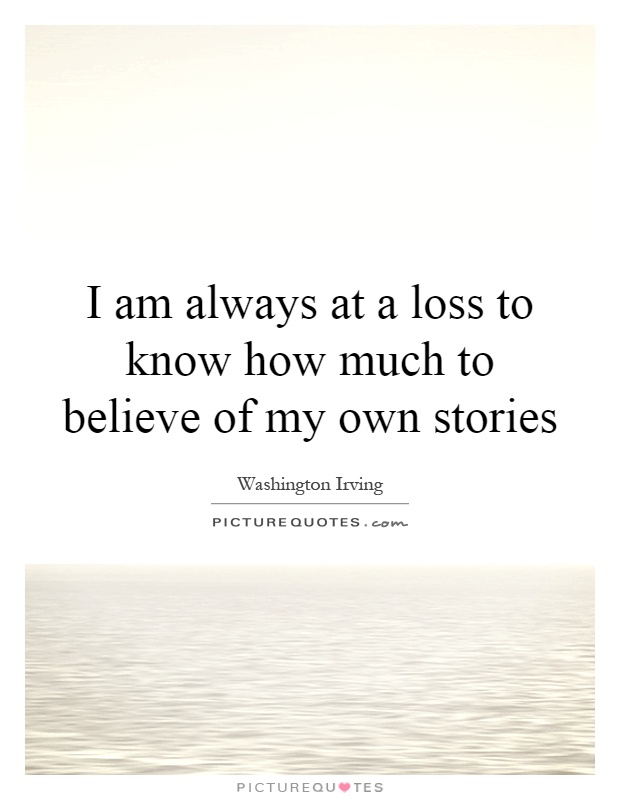I am always at a loss to know how much to believe of my own stories

I am always at a loss to know how much to believe of my own stories
Washington Irving, a masterful storyteller known for his works such as "The Legend of Sleepy Hollow" and "Rip Van Winkle," once famously said, "I am always at a loss to know how much to believe of my own stories." This statement reflects the complex relationship between truth and fiction in Irving's writing, as well as the blurred lines between reality and imagination that often characterize his work.Irving was a pioneer of American literature, known for his ability to blend elements of folklore, history, and fantasy in his stories. His tales often feature larger-than-life characters and supernatural occurrences, blurring the boundaries between the natural and the supernatural. In many of his works, such as "The Devil and Tom Walker" and "The Legend of Sleepy Hollow," Irving weaves together elements of myth and legend with his own unique storytelling style, creating a world that is both familiar and fantastical.
One of the reasons Irving may have felt unsure about how much to believe of his own stories is the fact that many of his tales are based on real events or historical figures. For example, "Rip Van Winkle" is inspired by a German folktale, while "The Legend of Sleepy Hollow" is set in the real town of Tarrytown, New York. By blending fact and fiction in this way, Irving creates a sense of ambiguity that challenges readers to question the nature of truth and reality.












 Friendship Quotes
Friendship Quotes Love Quotes
Love Quotes Life Quotes
Life Quotes Funny Quotes
Funny Quotes Motivational Quotes
Motivational Quotes Inspirational Quotes
Inspirational Quotes